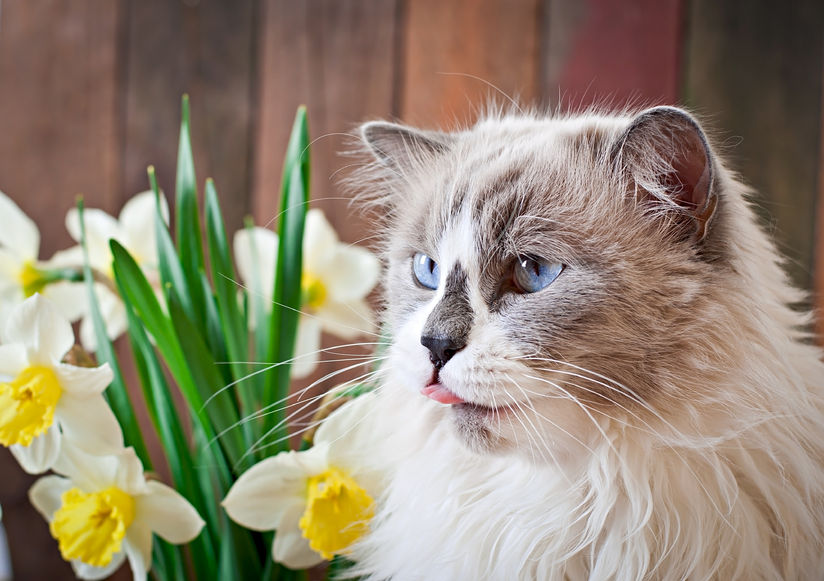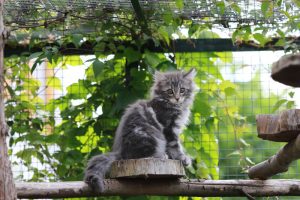Plants Poisonous To Cats
 March 9, 2017
March 9, 2017
With so many secret deadly plants lurking in backyards around the globe, Nadia Crighton takes a look at the top poisonous plants that can wreak havoc on your precious cat.
Every cat lover knows that cats are curious creatures who delight in playing with absolutely anything that takes their fancy. However, this natural curiosity for the amazing world around them can lead to health issues, particularly if the playing turns into tasting!
Many cats take delight in chomping on a few flowers inside the home, so it’s a good idea to keep all foliage out of reach. It seems most of these plants do come from the bulb family, and while the bulb does contain the highest levels of toxin all parts of the plant can cause harm. Lily poisoning is especially dangerous in cats. If you suspect your cat has ingested any part of a lily seek veterinary advice immediately.
Common Plants Poisonous to Cats
- Azaleas and Rhododendrons
- Castor Bean
- Chrysanthemum
- Cyclamen
- English Ivy
- Kalanchoe
- Marijuana
- Oleander
- Pothos
- Sago Palm
- Spanish thyme
- Tulip and Narcissus bulbs
- Yew
Amaryllis (AKA Jersey Lily, Lily Langtry)
These stunning trumpet shaped flowers are highly poisonous to cats if ingested. They are very common in bouquet flowers from florists so it’s a good idea to check if they are in your array of ordered flowers. Always keep these flowers out of playing reach to your cat or kitten. All parts of the plant, including the bulb, are poisonous to cats.
Autumn Crocus (AKA Meadow Saffron)
Most species will flower in winter and spring (with a few in Autumn) and develop a mass of stunning purple or white blooms. These are also poisonous to dogs and horses.
Popular lilies highly poisonous to cats
- Asian Lily
- Easter Lily
- Glory Lily
- Japanese Show Lily
- Peace Lily
- Red Lily
- Rubrum Lily
- Stargaszer Lily
- Tiger Lily
- Wood Lily
For some it is impossible to eradicate all of the toxic plants from our homes and gardens. However, with some simple tricks you can deter your cat from exploring the areas where these plants bloom. Also be careful where you store your bulbs. Keep them in locked containers and away from curious cat eyes. For plants consider spraying citronella or another citrus based oil around the soil of the plant. Or plant herbs around the base of the plant that cats do not like such as lavender, rosemary or lemon balm.
Symptoms of Cat Poisoning
- Depression
- Lethargy
- Vomiting / diarrhoea
- Difficulty in breathing
- Shaking or seizures
- Increased salvation or drooling
- Sneezing or coughing
- Weakness
- Unconsciousness or coma
When any of these symptoms occur apply Basic First Aid and contact your veterinarian.
#HOT TIP: Get creative! If you have a plant that you simply adore, such as a peace-lily but you want to keep your cat or kitten safe, consider keeping it in a cage or hanging basket. Ensure you keep the leaves short (so they don’t poke through the cage).
More content:
Ways to keep your indoor cat entertained




